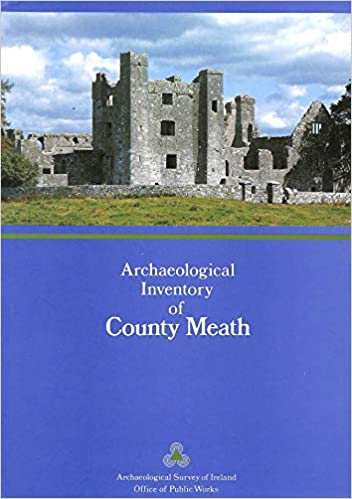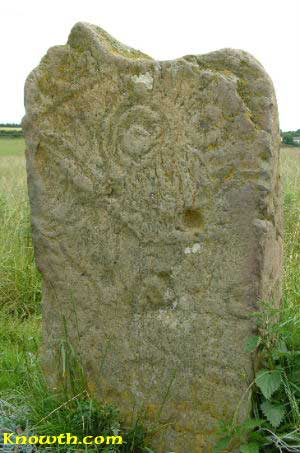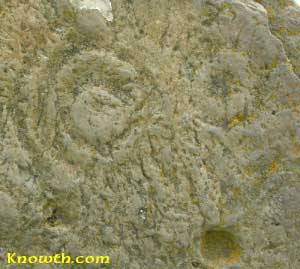Archaeological Inventory of County Meath
 Archaeological Inventory of County Meath compiled by Michael J. Moore was published by the Archaeological Survey, Office
of Public Works in 1987.
Purchase at Amazon.com or
Amazon.co.uk
Archaeological Inventory of County Meath compiled by Michael J. Moore was published by the Archaeological Survey, Office
of Public Works in 1987.
Purchase at Amazon.com or
Amazon.co.uk
All known archaeological sites from the neolithic up to about 1700 AD are listed by category: Megalithic Tombs, Barrows, Cemetery Mounds, Ring-ditches, Tumuli, Mounds, Cists and Pits, Prehistoric Decorated Stones, Stone Circles and Henges, Standing Stones, Fulachta Fiadh, Crannogs, Hillforts, Inland Promontory and Cliff-top Forts, Habitatins Sites, Souterrains, Ringforts and Cashels, Enclosures, Earthworks, Linear Earthworks, Rectilinear Enclosures and Earthworks, Field Systems, Large Enclosures, Churches, Crosses, Fonts, Sculptured and Inscribed Stones, Cemeteries, Mottes, Moated Sites, Deserted Settlements, Ringworks, Castles, Tower Houses and Gatehouses, Stone Houses, Town Defences, Roads, Bridges and Post-medieval Fortifications.
There are 1854 sites listed, each entry has a brief description of the site with principle dimensions, the townland where the site is located and the national grid reference. There are only 30 photographs (in black and white). The book includes 28 location maps with unique reference numbers for the archaeological sites.
Mullagharoy Standing Stone
 Location: Mullagharoy, Co. Meath
Location: Mullagharoy, Co. MeathOrdnance Survey map 35
National Grid Reference N 946 803
The Standing Stone is just 1.3 metres high and is situated in the middle of a field with no other stones in sight. The stone isn't visible from the road side because there is a field between the field where the stone is located and the road.
The Mullagharoy Standing Stone is listed under the category 'Prehistoric Decorated Stones' as follows:
"Decorated Stone - The SW face of this standing stone, aligned NNW-SSE, is ornamented with picked concentric circles and are designs somewhat anthropomorphic in appearance and akin to passage-tome art."
 The pair of concentric circles near the top of the stone do
resemble human eyes (Anthropomorphic means resembling the human form), we
can only speculate whether this is accidental or by design.
The pair of concentric circles near the top of the stone do
resemble human eyes (Anthropomorphic means resembling the human form), we
can only speculate whether this is accidental or by design.
Another decorated stone in the chamber at Fourknocks may also be a representation of the human face.
Boyne Valley Private Day Tour
 Immerse yourself in the rich heritage and culture of the Boyne Valley with our full-day private tours.
Visit Newgrange World Heritage site, explore the Hill of Slane, where Saint Patrick famously lit the Paschal fire.
Discover the Hill of Tara, the ancient seat of power for the High Kings of Ireland.
Book Now
Immerse yourself in the rich heritage and culture of the Boyne Valley with our full-day private tours.
Visit Newgrange World Heritage site, explore the Hill of Slane, where Saint Patrick famously lit the Paschal fire.
Discover the Hill of Tara, the ancient seat of power for the High Kings of Ireland.
Book Now
Home
| Newgrange
| Knowth
| Dowth
| Hill of Tara
| Fourknocks
| Loughcrew
| More Places
| Labyrinths
| Local Info
| Art Works
| Articles
| Images
| Books
| Links
| Boyne Valley Tours
| Contact
